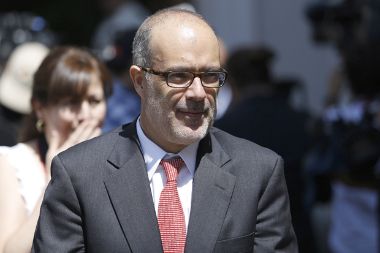The fiscal rule on rainy days

Nueva Mayoría's governing center-left Coalition has resorted to its usual pragmatism displayed in 25 years of transition to democracy and once again the government is relying on its fiscal rule to cope with external factors affecting the economy. Finance Minister, Rodrigo Valdés has announced this week that a major adjustment in expenditure must be in place to cope against the backdrop of lower copper prices (currently at US 2 and below), China's slowdown and an appreciated dollar. The fiscal rule basically has meant fiscal austerity by having invested wisely during the boom of commodities and saved while the prices were soaring, with the aim of easily adjusting fiscal expenditure in the likelihood of rainy days. Indeed, rainy days are here: Valdés announced that about USD 540 million will have to be deducted from the usual expenses. An adjustment in line with the rest of the Alianza del Pacífico bloc (Mexico, Colombia, Peru, and Chile) which have seen their budgets tightened. In fact, the announcement is one of the lowest in Latin America, but it is sending a strong signal to risk evaluators to keep the AA- that Chile enjoys in regards to financial resilience, political stability and controlled public debt, especially when S & P have downgraded Codelco's rating to only A+ as a consequence of the fall in commodities worldwide in particular copper.
The benefits observed in 25 years of transition to democracy in terms of prudence and austerity in social expenditure has provided a good shield to the Chilean economy which on rainy days can see one the lowest budgets adjustment to cope with external shocks from the end of the commodity boom, low copper price and an appreciated dollar. Indeed, according to PULSE, there is no agreement in local financial experts working for the various local banks as to how much will the Chilean economy grow in 2016, but they estimate it will be around 2% or between 1,7 - 2%
These figures are in line with IMF's estimations for Chile. The instability that marked the beginning of 2016 sent copper prices below US 2 by February and only now, it has seen an increment of US 2.3. According to Finance Minister Valdés, the budget tightening was calculated in the long term with a projection of USD 2.50 instead of USD 3. This reduction of fiscal expenditure was made for the worst case scenario and it will account for 1% of GDP.
However, repatriation of revenues and fiscal collection in 2015 were better than expected and they helped soften the budget tightening in the current figure announced this week.
For more information see PULSE and CNN CHILE, an interesting interview to Minister Valdes on CNN Chile
February 29th, 2016. Soledad Soza
